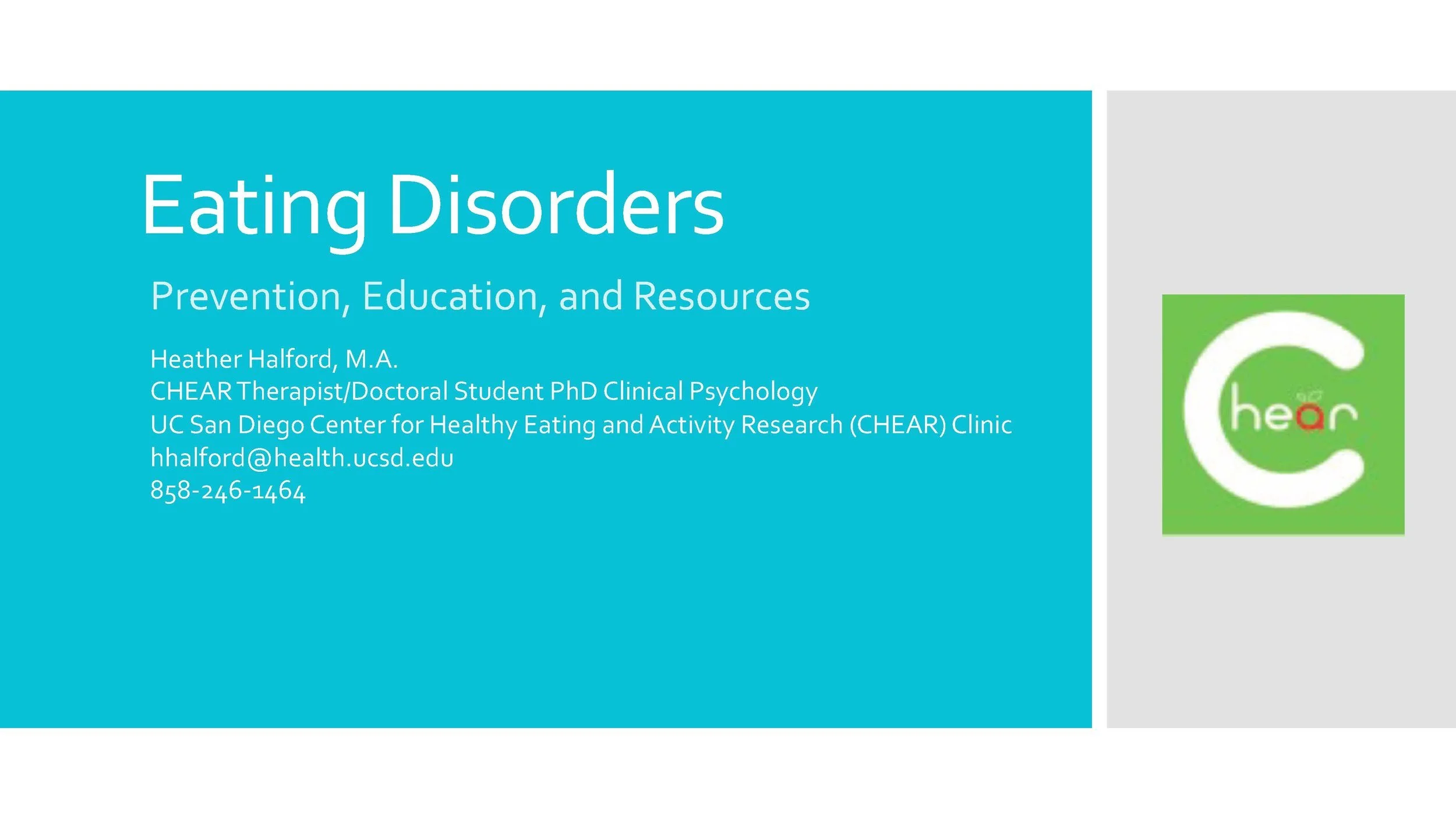Eating Disorders
View the PowerPoint presentation from our presenter, CHEAR Therapist/Doctoral Student Heather Halford, and learn about disordered eating in youth. Scroll below for more info and additional resources. Click Here to learn more about CHEAR and its resources.
Click Here for Full Presentation
For more resources around eating disorders go to NEDA (National Eating Disorders Association) for help.
-
Losing weight unexpectedly and/or being dangerously thin (Despite their extreme thinness, kids with anorexia usually don’t think that they are unhealthy and actually want to lose even more weight.)
Obsessing over calorie counts, nutritional facts, and diets
Spending many hours exercising to burn off calories
Skipping meals & Avoiding eating socially
Information from the Child Mind Institute,
Click here to read a quick guide to Anorexia Nervosa -
Exercising excessively or using diet pills or laxatives
Going to the bathroom immediately after meals
Spending a lot of time in the bathroom
Having a sore throat, sore knuckles, discolored teeth, and poor enamel
Hoarding food in her room
Having large amounts of food that go missing at home
Information from the Child Mind Institute,
Click here to read a quick guide to Bulimia Nervosa -
Try to establish healthy eating habits. Make a routine of eating healthy, balanced meals as a family.
Discuss foods in terms of how healthy they are, not how “good” or “bad” they are.
Don’t criticize your child’s weight or appearance. Adolescence is a difficult time for most kids, and it’s essential to provide them with a nurturing and supportive environment.
Some kids are more likely than others to develop eating disorders. Be extra vigilant.
Information from Child Mind Institute, Click here to read the full article
-
“Not all boys who express dissatisfaction with their bodies will develop an eating disorder. And unlike with girls, who often become alarmingly skinny and visibly unhealthy, eating disorders in boys are harder to recognize because often nothing looks “wrong” on the outside.
Here’s what to look for if you’re trying to determine whether a boy’s habits are within the normal range of eating behavior or have crossed into something that needs attention”
Excessive focus on and time spent exercising
Rigidity around eating rituals
Eating large of amounts of food
Going to the bathroom in the middle of meals or right after
Refusing to eat certain food groups
Avoiding or withdrawing from social gatherings involving food
Information from Child Mind Institute, Click here to read the full article.
-
Binge Eating Disorder: The primary symptoms of BED are recurring episodes of binge eating. Those episodes are defined by eating more food than most people would consume in a discrete period of time — for instance, within a 2-hour period — and a sense of lack of control over eating during the episode. A person with BED feels unable to stop. Click Here to Read More.
Atypical Anorexia Nervosa: In this case the teenager, almost always a girl, is not noticeably thin. Usually overweight to begin, she too has become obsessed with extreme dieting and exercise, and has lost a dramatic amount of weight. She has the same thoughts and behaviors as someone with typical anorexia and is putting similar stress on her body. But she doesn’t look unhealthy, which means that this disorder often goes unnoticed. Click Here to Read More.
Information from Child Mind Institute
Additional Resources
Eating Disorders, Child Mind Institute
Eating Disorders & Youth, Mental Health America
Eating Disorder Screening Test, Mental Health America
Family-Based Treatment for Eating Disorders, Child Mind Institute
The Family’s Role in Recovery from Eating Disorders, Child Mind Institute
Eating Disorder Statistics, National Association of Anorexia Nervosa and Associated Disorders (AAND)

